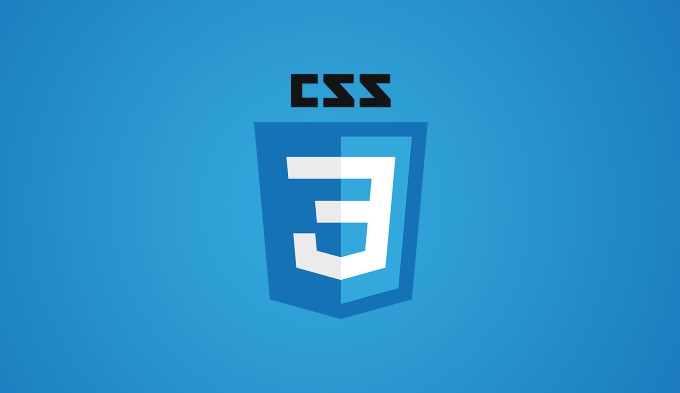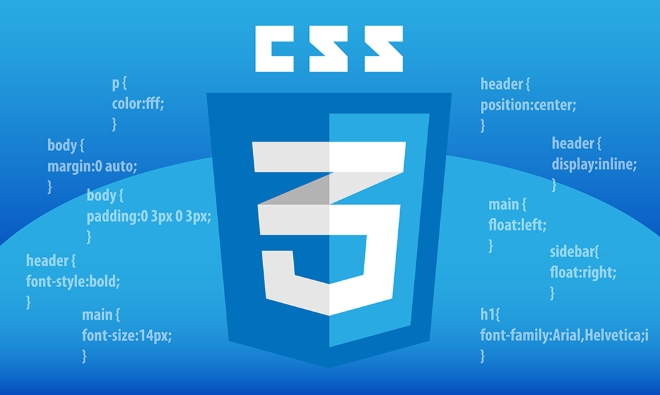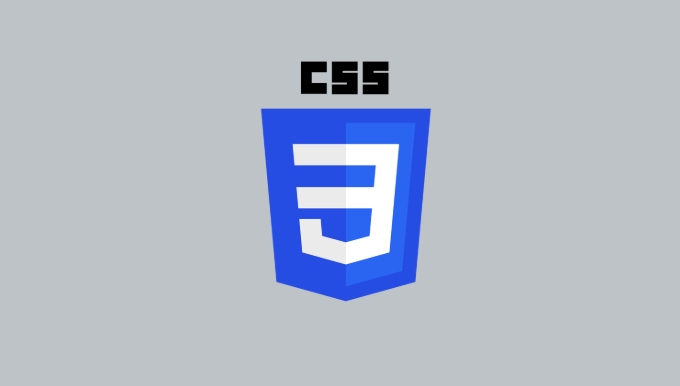The CSS appearance property allows developers to control the native styling of form elements. To reset default appearance, use -webkit-appearance: none, -moz-appearance: none, and appearance: none on elements like input, button, and select. 1. Removing native styles gives a clean slate for custom designs but may remove accessibility cues like focus outlines, so custom feedback must be added. 2. After resetting appearance, developers can fully customize elements such as checkboxes by hiding the default input and using pseudo-elements or icons for visual states. 3. In cases where native looks are preferred, setting appearance: button or appearance: auto restores system-default styling, which varies across operating systems and may affect cross-device consistency. Always test across browsers and ensure accessibility when overriding default behavior.

The CSS appearance property is useful when you want to make form elements look like their default system controls or remove that native styling completely. It’s especially handy for customizing checkboxes, buttons, and other UI components consistently across browsers.

How to Reset Default Appearance
By default, browsers apply some native styles to form elements like <input>, <select></select>, or <button></button>. If you're trying to fully style them yourself, the first step is usually to remove this built-in appearance:
input,
button,
select {
-webkit-appearance: none;
-moz-appearance: none;
appearance: none;
}This removes the default look, giving you a clean slate. Note that not all browsers support appearance without a prefix, so including -webkit- and -moz- is still a good idea if you need broad compatibility.

One thing to keep in mind: once you remove the default appearance, some elements may lose visual cues like focus outlines or hover states, which can affect accessibility. So always make sure to add your own visual feedback.
Customizing Form Elements Visually
Once you've reset the appearance, you can start applying your own styles. For example, let's say you want to create a custom checkbox:

<label class="custom-checkbox"> <input type="checkbox" /> <span class="checkmark"></span> Click me </label>
And the CSS would look like this:
.custom-checkbox input {
display: none;
}
.checkmark {
height: 16px;
width: 16px;
border: 2px solid #999;
border-radius: 3px;
display: inline-block;
position: relative;
}
.custom-checkbox input:checked ~ .checkmark {
background-color: #4CAF50;
border-color: #4CAF50;
}
/* Optional: add a checkmark icon or pseudo-element */
.custom-checkbox input:checked ~ .checkmark::after {
content: "";
position: absolute;
left: 5px;
top: 2px;
width: 5px;
height: 10px;
border: solid white;
border-width: 0 2px 2px 0;
transform: rotate(45deg);
}This lets you fully control the look of the checkbox while maintaining functionality. You can do similar things with radio buttons, sliders, or dropdowns by resetting appearance and building your own visuals.
When to Keep the Native Look
Sometimes, instead of removing appearance, you might actually want to restore or preserve the native look. This can be helpful when you only want to tweak certain parts but keep the element feeling familiar on different platforms:
button {
-webkit-appearance: button;
-moz-appearance: button;
appearance: button;
}This is useful if you’re toggling between themes or modes where some elements should look standard again. But be aware — exactly how it looks depends on the user’s operating system, so consistency across devices isn't guaranteed.
Also, using appearance: auto can sometimes help restore expected behavior in tricky layout situations, though browser support varies.
That's basically how the appearance property works. It's straightforward but powerful, especially when dealing with form customization. Just remember to test your changes across browsers and consider accessibility when overriding default behaviors.
The above is the detailed content of How to use the CSS `appearance` property?. For more information, please follow other related articles on the PHP Chinese website!

Hot AI Tools

Undress AI Tool
Undress images for free

Undresser.AI Undress
AI-powered app for creating realistic nude photos

AI Clothes Remover
Online AI tool for removing clothes from photos.

Clothoff.io
AI clothes remover

Video Face Swap
Swap faces in any video effortlessly with our completely free AI face swap tool!

Hot Article

Hot Tools

Notepad++7.3.1
Easy-to-use and free code editor

SublimeText3 Chinese version
Chinese version, very easy to use

Zend Studio 13.0.1
Powerful PHP integrated development environment

Dreamweaver CS6
Visual web development tools

SublimeText3 Mac version
God-level code editing software (SublimeText3)
 How to use PHP to build social sharing functions PHP sharing interface integration practice
Jul 25, 2025 pm 08:51 PM
How to use PHP to build social sharing functions PHP sharing interface integration practice
Jul 25, 2025 pm 08:51 PM
The core method of building social sharing functions in PHP is to dynamically generate sharing links that meet the requirements of each platform. 1. First get the current page or specified URL and article information; 2. Use urlencode to encode the parameters; 3. Splice and generate sharing links according to the protocols of each platform; 4. Display links on the front end for users to click and share; 5. Dynamically generate OG tags on the page to optimize sharing content display; 6. Be sure to escape user input to prevent XSS attacks. This method does not require complex authentication, has low maintenance costs, and is suitable for most content sharing needs.
 PHP creates a blog comment system to monetize PHP comment review and anti-brush strategy
Jul 25, 2025 pm 08:27 PM
PHP creates a blog comment system to monetize PHP comment review and anti-brush strategy
Jul 25, 2025 pm 08:27 PM
1. Maximizing the commercial value of the comment system requires combining native advertising precise delivery, user paid value-added services (such as uploading pictures, top-up comments), influence incentive mechanism based on comment quality, and compliance anonymous data insight monetization; 2. The audit strategy should adopt a combination of pre-audit dynamic keyword filtering and user reporting mechanisms, supplemented by comment quality rating to achieve content hierarchical exposure; 3. Anti-brushing requires the construction of multi-layer defense: reCAPTCHAv3 sensorless verification, Honeypot honeypot field recognition robot, IP and timestamp frequency limit prevents watering, and content pattern recognition marks suspicious comments, and continuously iterate to deal with attacks.
 What are common CSS browser inconsistencies?
Jul 26, 2025 am 07:04 AM
What are common CSS browser inconsistencies?
Jul 26, 2025 am 07:04 AM
Different browsers have differences in CSS parsing, resulting in inconsistent display effects, mainly including the default style difference, box model calculation method, Flexbox and Grid layout support level, and inconsistent behavior of certain CSS attributes. 1. The default style processing is inconsistent. The solution is to use CSSReset or Normalize.css to unify the initial style; 2. The box model calculation method of the old version of IE is different. It is recommended to use box-sizing:border-box in a unified manner; 3. Flexbox and Grid perform differently in edge cases or in old versions. More tests and use Autoprefixer; 4. Some CSS attribute behaviors are inconsistent. CanIuse must be consulted and downgraded.
 How to build a PHP Nginx environment with MacOS to configure the combination of Nginx and PHP services
Jul 25, 2025 pm 08:24 PM
How to build a PHP Nginx environment with MacOS to configure the combination of Nginx and PHP services
Jul 25, 2025 pm 08:24 PM
The core role of Homebrew in the construction of Mac environment is to simplify software installation and management. 1. Homebrew automatically handles dependencies and encapsulates complex compilation and installation processes into simple commands; 2. Provides a unified software package ecosystem to ensure the standardization of software installation location and configuration; 3. Integrates service management functions, and can easily start and stop services through brewservices; 4. Convenient software upgrade and maintenance, and improves system security and functionality.
 Describe the `vertical-align` property and its typical use cases
Jul 26, 2025 am 07:35 AM
Describe the `vertical-align` property and its typical use cases
Jul 26, 2025 am 07:35 AM
Thevertical-alignpropertyinCSSalignsinlineortable-cellelementsvertically.1.Itadjustselementslikeimagesorforminputswithintextlinesusingvalueslikebaseline,middle,super,andsub.2.Intablecells,itcontrolscontentalignmentwithtop,middle,orbottomvalues,oftenu
 What is the accent-color property?
Jul 26, 2025 am 09:25 AM
What is the accent-color property?
Jul 26, 2025 am 09:25 AM
accent-color is an attribute used in CSS to customize the highlight colors of form elements such as checkboxes, radio buttons and sliders; 1. It directly changes the default color of the selected state of the form control, such as changing the blue check mark of the checkbox to red; 2. Supported elements include input boxes of type="checkbox", type="radio" and type="range"; 3. Using accent-color can avoid complex custom styles and extra DOM structures, and maintain native accessibility; 4. It is generally supported by modern browsers, and old browsers need to be downgraded; 5. Set accent-col
 How to compile SCSS to CSS?
Jul 27, 2025 am 01:58 AM
How to compile SCSS to CSS?
Jul 27, 2025 am 01:58 AM
InstallDartSassvianpmafterinstallingNode.jsusingnpminstall-gsass.2.CompileSCSStoCSSusingthecommandsassinput.scssoutput.css.3.Usesass--watchinput.scssoutput.csstoauto-compileonsave.4.Watchentirefolderswithsass--watchscss:css.5.Usepartialswith_prefixfo
 How to change text color in CSS?
Jul 27, 2025 am 04:25 AM
How to change text color in CSS?
Jul 27, 2025 am 04:25 AM
To change the text color in CSS, you need to use the color attribute; 1. Use the color attribute to set the text foreground color, supporting color names (such as red), hexadecimal codes (such as #ff0000), RGB values (such as rgb(255,0,0)), HSL values (such as hsl(0,100%,50%)), and RGBA or HSLA with transparency (such as rgba(255,0,0,0.5)); 2. You can apply colors to any element containing text, such as h1 to h6 titles, paragraph p, link a (note the color settings of different states of a:link, a:visited, a:hover, a:active), buttons, div, span, etc.; 3. Most






